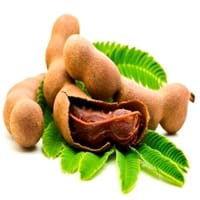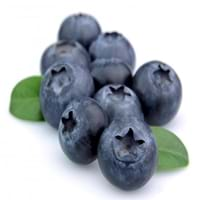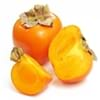Health Benefits
Boosts immune system, Boosts respiratory health, Cancer prevention, Digestive aid, Piles treatment
Cancer prevention, Heart care, Increases metabolic rate, Strengthening of bones, Treatment of skin Diseases
General Benefits
Beneficial in improving nerve function, Protects against parasites and worms, Relieves pain
Anti oxidant properties, Boosts immune system, Digestive aid, Eye care, Improves blood circulation, Sore throat treatment
Skin Benefits
Anti-aging benefits, Brightens and lightens complexion, Exfoliates skin, Hydrates skin, Treatment of dark spots
Anti-aging benefits, Reduces wrinkles, Skin rejuvenation, Treatment of skin diseases
Hair Benefits
Prevents hair loss
Protects hair
Allergy Symptoms
Abdominal pains, Breathing difficulty, Dizziness, Eczema, Fainting, Hives, Itching, Nasal congestion, Swelling of face, Tingling sensation in mouth, Vomiting
Abdominal pains, Coughing, Diarrhea, Itching, Runny nose, Sneezing, Swelling of mouth, tongue or lips, Wheezing
Side Effects
Decrease in blood sugar levels, Induces acid reflux, Allergic reaction, Tooth decay, May form gallstones
Allergic reaction
Best Time to Eat
Along with meal, As a snack in the late afternoon, Don't consume at night and before bed, Strictly avoid empty stomach
Best if taken as a breakfast (or empty stomach), As a snack in the late afternoon, Don't consume at night and before bed, Eat the fresh ones, avoid mixing with any other foods, don't eat after meal., Morning time (before lunch)
Vitamin A (Retinol)
Not Available
Vitamin B5 (Pantothenic Acid)
Not Available
Vitamin B6 (Pyridoxin)
Not Available
Vitamin B9 (Folic acid)
Not Available
Vitamin C (Ascorbic Acid)
Vitamin E (Tocopherole)
Not Available
Vitamin K (Phyllochinone)
Not Available
Lutein+Zeaxanthin
Not Available
Phytosterol
Not Available
Calories in Fresh Fruit with Peel
Not Available
Calories in Fresh Fruit without Peel
Not Available
Calories in Frozen Form
Not Available
Calories in Dried Form
Not Available
Calories in Canned Form
Not Available
Not Available
Season
Spring, Summer
Summer
Varieties
PKM 1, Urigam, Hasanur, Tumkur prathisthan, DTS 1 and Yogeshwari
Dwarf Huckleberry, Cascade Huckleberry, Mountain huckleberry and Blackwinter Huckleberry
Color
Brown, Reddish-brown
Blue, Purple, Purplish black
Inside Color
Brown
Purple
Shape
Curving Cylinder
Round
Origin
Africa
North America
Grows on
Trees
Not Available
Soil Type
Loam, Sandy, Sandy loam, Well-drained
Loamy, Sandy, Well-drained
Climatic Conditions
Humid to dry, Rainfall, Warm to hot climate
Humid, Warm
Facts about
- Tamarind is used to prevent body odor.
- African children use the tamarind seeds in games.
- No cases of tamarind toxicity or allergy reported till date.
- "I'm your huckleberry" is a way of saying that one is just the right person for a given job.
- The phrase "a huckleberry over my persimmon" was used to mean "a bit beyond my abilities".
Top Producer
India
United States of America
Other Countries
Africa, Australia, Brazil, China, Mexico, Nigeria, Sudan, Taiwan
Canada
Top Importer
United States of America
Canada
Top Exporter
Thailand
Chile
Botanical Name
Tamarindus indica
Gaylussacia brachycera
Synonym
Tamarindo, tamarindus
Not Available
Subkingdom
Tracheobionta
Tracheobionta
Division
Magnoliophyta
Magnoliophyta
Class
Liliopsida
Magnoliopsida
Subclass
Rosidae
Asteridae
Family
Fabaceae
Ericaceae
Genus
Tamarindus
Gaylussacia
Species
Tamarindus indica
G. brachycera
Generic Group
Tamarind Sub
Heath
Compare Tamarind and Huckleberry
It is important compare Tamarind and Huckleberry as both the fruits have a different nutritional value. Their comparison can be done on the basis of their vitamin and mineral content, calories, benefits as well as characteristics, making it easier for us to choose the best fruit for our diet. Their general health benefits are as follows:
Tamarind Benefits: beneficial in improving nerve function, protects against parasites and worms and relieves pain.
Huckleberry Benefits: anti oxidant properties, boosts immune system, digestive aid, eye care, improves blood circulation and sore throat treatment.
Fruits are also used as a remedy for various hair problems. The hair benefits of Tamarind are: prevents hair loss and hair benefits of Huckleberry are: protects hair. Some fruits are known to cause allergic reactions. The allergy symptoms of first fruit are: abdominal pains, breathing difficulty, dizziness, eczema, fainting, hives, itching, nasal congestion, swelling of face, tingling sensation in mouth and vomiting and the symptoms of second fruit are: abdominal pains, coughing, diarrhea, itching, runny nose, sneezing, swelling of mouth tongue or lips and wheezing. Get sorted Tamarind vs Huckleberry comparison with the help of fruit comparison tool by fruitvs.com.









